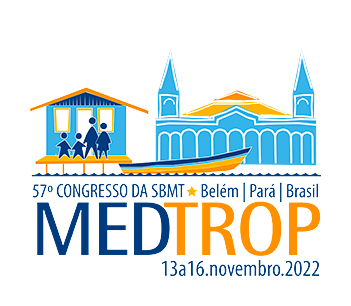Dados do Trabalho
Título
Increasing treatment time did not cure mice orally inoculated with Trypanosoma cruzi II
Objetivo(s)
Our objective was to evaluate the effects of treatment time with benznidazole (BZ) on oral experimental infection with Trypanosoma cruzi.
Material e Métodos
Six groups of male Swiss mice (n=10) were orally (OR) inoculated with 1x104 blood trypomastigotes (BT) of the Y strain of T. cruzi II (TcII). Three groups were treated with BZ (TBZ) 100 mg / kg / day, from the 10th day after inoculation, for 20, 40 or 60 consecutive days, and the other three did not receive the drug and were maintained as untreated controls (NT). All groups (TBZ and NT) underwent fresh blood examination, blood culture (BC) and quantitative real-time polymerase chain reaction (qPCR) and immunosuppressed with cyclophosphamide (Cy) 50 mg/kg/day for three weeks. The mean of the parameters pre-patent period (PPP), patent period (PP), maximum peak of parasitemia (Pmax), day of maximum peak (DPmax), area under the parasitemia curve (AUC) and the percentage of animals with positive BC (%+BC), were obtained from blood samples collected before immunosuppression. The qPCR was performed on blood collected before and after immunosuppressive treatment and on cardiac tissue.
Resultados e Conclusão
Significant differences (p=0.0002) were observed between the results of TBZ and NT animals in 4/5 parameters derived from the parasitemia curve, except for PPP. The %+BC ranged from 50 to 100% in the NT animals and from 20 to 80% in the TBZ animals. The qPCR was positive in all blood samples in all experimental groups, with a significant (p<0.0001) increase in parasite load (PL) after immunosuppression (from 5 par eq. /100 ng to 9,000 par eq. /100 ng). There was no significant difference (p=0.66) in the PL of cardiac tissue between groups treated at different times nor between controls after immunosuppression (5.5 par eq. /100 ng). Survival rates were significantly higher in the groups of animals treated for different times, ranging from 80 to 100%, compared to NT groups, which ranged from 30 to 50%. Although the increase from 20 to 40 and 60 days in the treatment time with BZ of animals OR infected with BT of the TcII strain did not promote parasitological cure, it caused a significant decrease in circulating parasites and in the lethality of treated animals, which was directly proportional to the treatment time.
Palavras-chave
: Trypanosoma cruzi II, oral infection, mice, benznidazole, treatment time.
Área
Eixo 06 | Protozooses
Categoria
(Concorra com apenas um trabalho) Concorrer ao Prêmio Jovem Pesquisador - Mestrado
Autores
DAVID FERNANDES SOUZA, RICARDO NASCIMENTO DROZINO, MARCELLA PAULA MANSANO SARTO, NILMA SOUZA FERNANDES, MAX JEAN ORNELLAS TOLEDO
